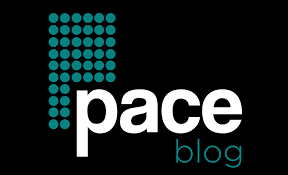In the rapidly evolving digital environment of today, companies are continually looking for methods to enhance efficiency and maintain a competitive edge. One highly effective approach to achieving this is through the use of ad automation. This technology-driven solution simplifies the creation, management, and optimization of online advertising campaigns, enabling businesses to conserve time, lower expenses, and boost overall effectiveness. This article delves into the advantages of ad automation, its operational mechanics, and best practices for incorporating it into your marketing strategy.
Understanding Ad Automation
Ad automation involves utilizing software and algorithms to manage various facets of online advertising campaigns automatically. Tasks such as bid management, ad design, audience targeting, and performance evaluation can all be automated. By streamlining these processes, organizations can allocate their time and resources more effectively, allowing marketing teams to concentrate on strategic initiatives and creative tasks instead of mundane operations. These tools optimize campaigns in real-time by adjusting bids, targeting parameters, and ad placements according to performance metrics. As a result, ads are consistently directed at the appropriate audience at optimal times—maximizing return on investment (ROI). Additionally, ad automation platforms can connect with multiple advertising channels like Google Ads and Facebook Ads as well as programmatic networks—offering a unified method for campaign management.

Advantages of Ad Automation
- Enhanced Efficiency: A key advantage of ad automation is its ability to significantly boost efficiency by automating repetitive tasks. This reduction in manual effort allows teams to redirect their focus toward more valuable activities such as strategic planning and analysis.
- Better Performance: Using machine learning algorithms enables ad automation tools to continuously refine campaigns based on real-time data inputs. This capability allows for immediate adjustments that enhance performance outcomes leading to improved results and increased ROI.
- Cost Reduction: Automation minimizes costs by removing the necessity for manual oversight while also decreasing the likelihood of human errors. For instance, automated bidding strategies can help businesses secure optimal results at minimal expense.
- Scalability: As companies expand their operations, managing numerous campaigns across various platforms can become complicated. Ad automation facilitates scalability by allowing businesses to handle extensive campaigns effortlessly.
- Improved Targeting: Ad automation systems have the capacity to sift through large datasets in order to pinpoint and engage with relevant audiences effectively—ensuring that advertisements reach suitable individuals at ideal moments which enhances conversion rates while minimizing wasted expenditure.
Implementing Ad Automation
To successfully adopt ad automation strategies within their operations, businesses should begin by selecting tools that meet their unique requirements and objectives efficiently while ensuring compatibility with existing systems alongside comprehensive analytics capabilities. Establishing clear goals and key performance indicators (KPIs) is vital as it steers the automation process towards achieving desired outcomes effectively.
Ongoing monitoring is equally important; despite its ability to manage many tasks autonomously, human oversight remains crucial for fine-tuning strategies based on data insights.
Conclusion
Ad automation serves as an invaluable asset for organizations aiming to increase efficiency levels while enhancing performance metrics alongside cost reductions. By automating standard procedures coupled with sophisticated algorithms that optimize advertising efforts—companies can dedicate more resources toward growth strategies and innovation pursuits. Nevertheless, realizing full benefits from ad automation necessitates careful tool selection alongside goal-setting combined with consistent oversight practices; when executed properly—it has the potential to transform success within today’s fiercely competitive digital marketing arena.

